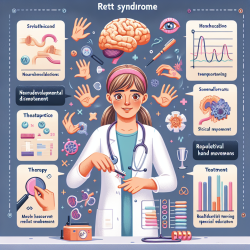Introduction
In the realm of healthcare, the use of race in clinical algorithms has been a topic of intense debate. The recent Health Equity Journal: Special Issue Guest Editorial sheds light on the historical misuse of race in medical decision-making and emphasizes the need for change. This blog post will explore the findings of this research and discuss how practitioners, especially those involved in online therapy services like TinyEYE, can enhance their skills and contribute to better outcomes for children by understanding and implementing these insights.
The Problem with Race-Based Algorithms
Race-based clinical algorithms have long been criticized for perpetuating health inequities. The editorial highlights that racial biological essentialism, the notion that race is a biological construct, is fundamentally flawed. Decades of research, including the human genome project, have shown that race is a sociopolitical construct rather than a biological one. Despite this, race-based algorithms continue to influence clinical decision-making, often leading to biased and inaccurate outcomes.
Key Findings from the Editorial
The editorial outlines several critical areas of concern and progress:
- Historical Origins: The use of race in clinical decision-making tools has deep historical roots, often based on erroneous assumptions about biological differences.
- Current Activities: Many institutions are actively working to remove race from clinical algorithms, with notable successes in fields like nephrology and obstetrics.
- Policy Support: There is growing support at city, state, and federal levels for policies that eliminate race adjustments in clinical tools.
- Interventions and Programs: Initiatives like the Coalition to End Racism in Clinical Algorithms (CERCA) are leading the charge in de-implementing race-based algorithms.
Implications for Practitioners
For practitioners in speech-language pathology and other fields, understanding the implications of race-based algorithms is crucial. By acknowledging the sociopolitical nature of race, practitioners can make more informed, equitable decisions. This understanding can lead to improved outcomes for children, as decisions are based on individual needs rather than outdated racial assumptions.
Steps for Practitioners
Practitioners can take several steps to improve their practice:
- Educate Yourself: Stay informed about the latest research on race and health equity. Understanding the historical context and current debates is essential for making informed decisions.
- Advocate for Change: Support policies and initiatives that aim to remove race from clinical algorithms. Engage with professional societies and contribute to discussions on health equity.
- Implement Equitable Practices: Review and adjust your clinical practices to ensure they are free from racial bias. Use data-driven approaches that focus on individual needs rather than racial categories.
Conclusion
The editorial in the Health Equity Journal provides a comprehensive overview of the challenges and opportunities in addressing race-based algorithms. By understanding and implementing these insights, practitioners can contribute to a more equitable healthcare system. As we move forward, it is crucial to remain vigilant and proactive in promoting health equity for all.
To read the original research paper, please follow this link: Health Equity Journal: Special Issue Guest Editorial.










